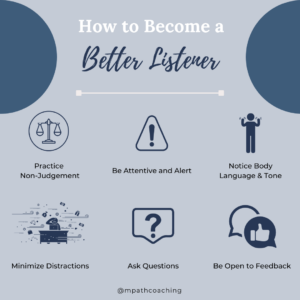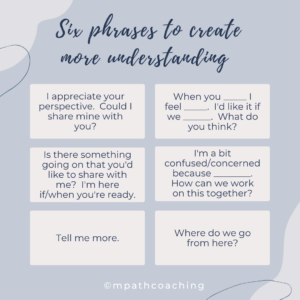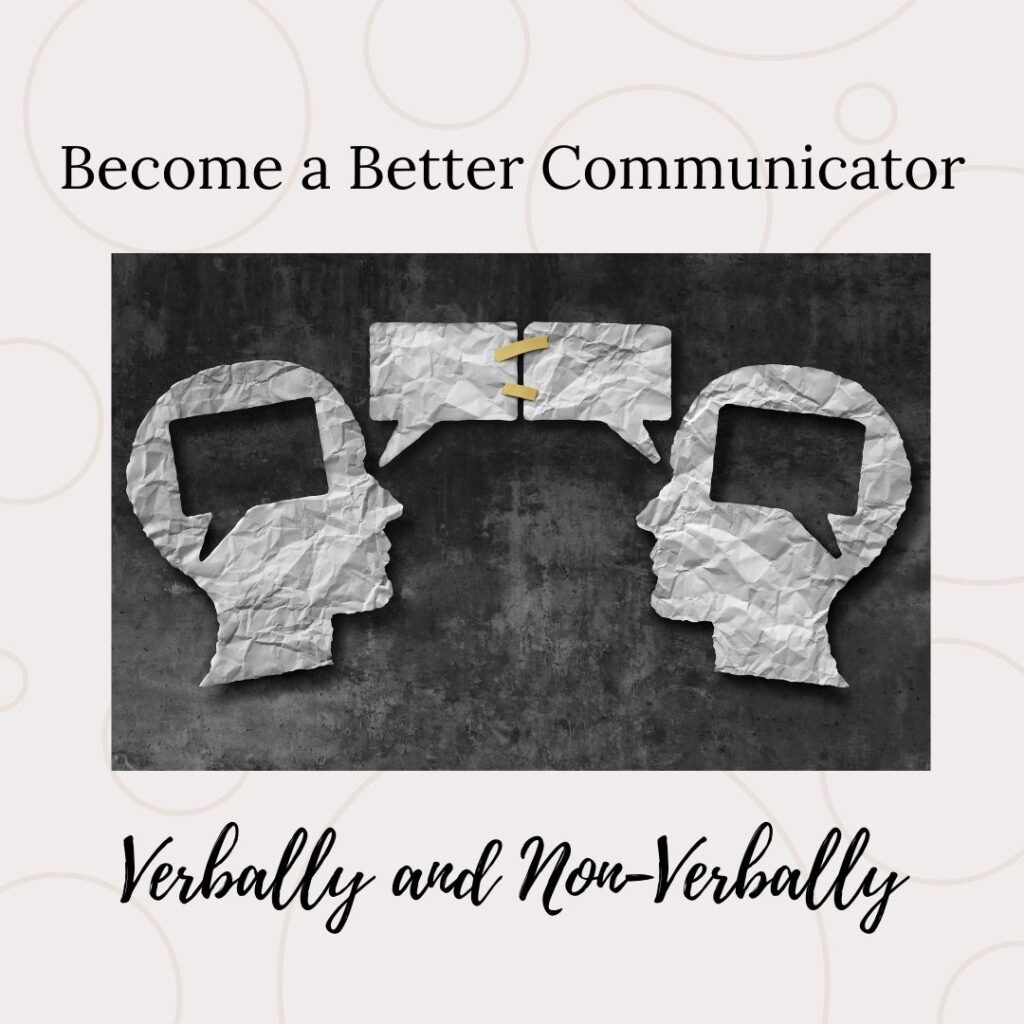Have you ever walked into a room and immediately felt the energy? Or exchanged a split-second glance with someone and knew what they were thinking? Communication transcends spoken word. It happens at a fast pace through nonverbal cues and energetic exchange. During a crisis, we may not have time to find and articulate the appropriate words, so we also communicate through our body, energy, and intuition. As change continues to accelerate at a rapid pace, how can we adapt to our circumstances and communicate effectively?
Despite advances in technology and communication tools, misunderstandings still exist inside and outside the workplace. This may stem from our assumptions, interpretations, unconscious biases, belief systems, triggers, and lack of clarity. We may misinterpret someone’s choice of words, which in turn could trigger our emotions and lead to conflict. Language and cultural differences can also lead to misunderstandings, as people express themselves differently. Seek the meaning and intent, rather than focusing on the words.
The goal is to expand self-awareness. Once you better understand your triggers and biases, you can learn how to manage, regulate, and even shift them.

Engage Your Senses to Communicate Effectively
When you are present in a conversation, you can engage your senses and uncover additional messages. If there are language or speech variations, tune into the energy and emotions behind the words.
Practicing mindfulness is a great way to improve these skills. As you perform an activity — drinking water for example — notice what you see, hear, feel, smell, and taste in the moment. This mindfulness exercise empowers you to stay present and align with your senses.
When you are present, you can engage your senses to understand what is spoken out loud and in silence.
—Manisha Dhawan
Audio and read-only formats may pose additional challenges, since visual cues are diminished. In audio-only situations, listen for the pitch, intonation, pace, pause, and energy in the voice. Often, the voice carries a personality — is it nervous, sarcastic, serious, or bold?
As you listen for the underlying energy, it is important to also clarify how someone is feeling. You might say something like, “I am sensing some frustration. How true is that?” This is a great way to leverage your intuition and gain clarity. With written communication, emojis, punctuation, and font style can provide additional context.
Future Communication Tools
Communication can be challenging across dispersed and diverse teams. Future communication tools will enhance our ability to understand each other. Wearable devices, sensors, and other technology can provide additional data points, including changes in breathing, heartrate, anxiety levels and emotions. Augmented intelligence will detect voice patterns and determine if someone is experiencing depression or mood changes. Remaining flexible and open to change will be helpful as we navigate the next digital revolution.
Regardless of communication method, our ability to pick up on subtleties and subtext can create more productive and pleasant conversations. Our human ability to empathize, connect, and foster trust can be combined with emerging technology to augment communication.
In particular, active listening is a powerful communication skill that we can learn to develop further. The benefits to active listening are many.
Active listening can help us communicate effectively and:
- Hone in on what matters
- Build trust
- Get more done
- Create stronger relationships
- Practice patience
- Promote collaboration
- Learn more about ourselves, who we are, and what we want by listening to other people’s stories
Active listening can help you learn more about yourself, who you are, and what you want, as you listen to other people’s stories.
—Manisha Dhawan
Improving communication skills takes practice. If you have the desire to learn and put in the effort, you will see noticeable improvement over time.
Here are several ways to communicate effectively:
Listen Actively
- Minimize distractions. Be attentive and engaged. Show genuine interest by genuinely being interested
- Pay attention to nonverbal cues, including body language, energy, and facial expressions
- Ask open-ended questions that show you care and encourage the other person to reflect (e.g. “why is that important to you?”). Then listen.
Show up with Empathy and Curiosity
- Create a safe space and build trust by showing up with empathy. Assume good intent
- Approach the conversation from a beginner’s mindset where the goal is to learn something new
- Do not be afraid to be vulnerable, share your thoughts, and take the conversation deeper than surface level, as appropriate
- Remain curious about the other person and ask clarifying questions when something is not clear
- Meet people where they are. If they are sad, then showing up excited may not resonate. This does not mean you need to be sad with them, it means acknowledging and validating where they are (e.g. “it makes sense you would feel that way”)
- Try to come from a place of compassion and non-judgment, including for yourself

Communicate with Purpose
- Understand your audience and tailor your message accordingly
- Identify desired outcomes for each party
- Strive to be authentic and clear in your communication
- Show gratitude. Saying “thank you” and expressing appreciation — even when you do not agree — can create space for diversity and empower different viewpoints
Reflect and Be Flexible
- Check in from time to time, for example by asking “how does that sound to you?” or “what do you think?”
- Remain open to feedback and keep practicing. Even if a conversation goes in an unexpected direction, stay open-minded and remember you can only control how you show up and react
- Know when to walk away. If the energy gets overwhelming, it might be a good time to pause and revisit the conversation at a later date. You could say, “it might be a good idea to continue to conversation after we’ve had some time to process.” Or “I need a moment to gather my thoughts and appreciate your patience.”
In addition, having a few go-to phrases can help you navigate through difficult situations. Below are a few examples.

Final Thoughts
By practicing active listening, genuine curiosity, patience and empathy, we can forge meaningful relationships and get work done more efficiently. If we also embrace the silent moments, we can allow words to be processed and energy to be felt. As we learn to communicate more effectively, we can drive greater impact, inclusion, and understanding inside and outside the workplace.
Copyright © 2021 Manisha Dhawan. All rights reserved.
For more inspiration and tips, follow me on LinkedIn.

Manisha Dhawan, Founder and CEO of MPath Coaching, is a certified professional coach (CPC), MBA and management consultant with 2 decades of experience leading digital innovation and change management initiatives across multiple industries. As a design thinking specialist and lifelong learner, Manisha is passionate about empowering executives to advance leadership skills, maximize team potential, and drive innovation forward. In addition to corporate coaching, Manisha works with professionals on career strategy and human skills development.

